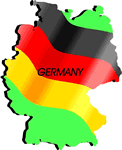Comparative Economic Systems

Students research the economic systems of a communist country and a third-world country and compare them to the US, guided by questions and using information from the CIA World Factbook website.
Introduction
What would life be like in the North Korean economy? How would things be different in the economy of Chad? In this lesson, you will have the opportunity to compare these two economies to the U.S. economy, and you’ll practice using some tools that can help you to study any economy in the world.
Learning Objectives
- Define market economies, command economies, and developing economies.
- Compare one country with another by reference to factors associated with economic performance.
Resource List
- CIA Factbook: The CIA updates its World Factbook website annually. Data are included for every country in the world, as well as several territories of other nations. Students will use this website to fill out their Comparative System Worksheets.
www.cia.gov/library/publications/the-world-factbook/index.html
- Comparative Systems Worksheet : Click on the link and print the chart, to fill in the information from each of the countries.
Comparative Systems Worksheet
Process
 First we need to take a moment to look at how economists categorize economies. A market economy is characterized by private ownership of the means of production (for example, farms and factories), and supply and demand are responsible for the price and allocation decisions. The United States, Hong Kong, and Germany are considered market economies. A command economy is characterized by government (or central) control ownership of the means of production, and with a central authority setting prices of goods and services and for most allocation decisions. North Korea and Cuba are command, or more specifically communist, economies. A developing economy is one which is not yet industrialized, but is developing. Chad, Ecuador, and Bangladesh are considered developing nations.
First we need to take a moment to look at how economists categorize economies. A market economy is characterized by private ownership of the means of production (for example, farms and factories), and supply and demand are responsible for the price and allocation decisions. The United States, Hong Kong, and Germany are considered market economies. A command economy is characterized by government (or central) control ownership of the means of production, and with a central authority setting prices of goods and services and for most allocation decisions. North Korea and Cuba are command, or more specifically communist, economies. A developing economy is one which is not yet industrialized, but is developing. Chad, Ecuador, and Bangladesh are considered developing nations.
In this lesson, you will compare several aspects of the economies of the United States (representing a market-oriented economy), North Korea (representing a command economy), and Chad (representing a developing economy). Print the Comparative Systems Worksheet. Go to the CIA World Factbook website to find the information needed to complete the chart.
Use the information from the worksheet to consider the following seven questions.
- How can the presence or absence of natural resources and arable land affect a nation’s economy, regardless of the type of economic system? [If a country has few natural resources and little land available for crops, it may not be able to produce enough food and products for the people.]
- How can life expectancy and literacy rates affect the quality of labor in the economy? [A shorter life expectancy may indicate poor medical care, and lower literacy rates may indicate poor education, both of which can have negative impacts on production.]
- How can fertility rates affect the use of scarce resources? [High fertility rates, especially in countries with few natural resources and lower GDPs, may indicate serious strains on scarce resources.]
- How can GDP per capita and poverty rates indicate standards of living in each system? [They can indicate standards of living in each system because GDP per capita is generally lower, and poverty rates are generally higher, in countries with lower standards of living.]
- How can the size of the industrial/service sector and the agriculture employment rate indicate the level of industrialization?[A larger industrial and service sector, and a larger number of people working outside of agriculture, can indicate a higher level of industrialization in the economy.]
- How can electricity, communication, and transportation facilities indicate the potential for industrial growth? [Greater electrical generation capacity, greater use of telephones and the Internet, and a greater availability of transportation via rail, highway, and airline can indicate a greater potential for increased industrialization.]
- Considering the lack of natural resources, the labor problems, and the lack of capital and little industrialization of developing countries, how can developing countries develop? (Hint: Look at Economy – Overview for Chad). [Developing countries can develop by infusion of funds and capital from other nations, the World Bank, the International Monetary Fund, and regional and humanitarian organizations.]
Conclusion
 Market-oriented and command nations tend to place different priorities on the role of government in the economy, with the government sector generally playing a larger role in command nations. Given their resources, market-oriented and command nations can choose to focus on increased industrialization and expansion into new markets. Developing nations, however, often lack resources necessary for industrialization and must seek aid or investment from industrialized economies in order to grow. With increased globalization, we are becoming more acutely aware of the interdependence of all nations in our world economy.
Market-oriented and command nations tend to place different priorities on the role of government in the economy, with the government sector generally playing a larger role in command nations. Given their resources, market-oriented and command nations can choose to focus on increased industrialization and expansion into new markets. Developing nations, however, often lack resources necessary for industrialization and must seek aid or investment from industrialized economies in order to grow. With increased globalization, we are becoming more acutely aware of the interdependence of all nations in our world economy.
Assessment
Now that you have studied the economic characteristics of these three countries, define the terms market-oriented, command, and developing economy in your own words. For each term, describe the specific characteristics of the countries you studied that would help to support your definition. [Market economies rely on private ownership of the means of production and supply and demand to determine prices and output. The US meets this definition, indicated by a lower amount of government and military spending as a percentage of GDP than North Korea does. Command economies feature government ownership of the means of production, and centralized planning of the economy. North Korea fits this definition with its high government and military spending as a percentage of GDP and its extensive use of government boards to determine economic production. Third world economies are not yet industrialized, but are developing. Chad is an example of this definition, characterized by low GDP, high poverty, little industrial employment, and poor energy, communication, and transportation systems.]
Try this same exercise, comparing the economic systems of nations large and small, industrialized and developing, well-known and little-known. Consider looking at the differences in the former Soviet republics and Eastern Europe, which are converting from command to socialist or market-oriented systems.
Prepare a grid similar to that on the Comparative Systems Worksheet, illustrating the most important points of comparison between the nations you have selected to study.